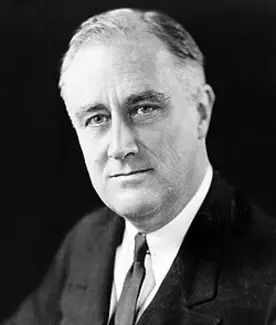RAPID CITY, S.D. — South Dakota’s distinct connection with American political history was once again underscored on November 3, 1936, when the state’s voters decisively cast their electoral votes in favor of Democratic candidate Franklin D. Roosevelt. The election was held amid the pervasive economic difficulties of the Great Depression, a period where hope was often in short supply across the United States. As a primarily rural state, South Dakota’s agrarian economy was heavily impacted by the Dust Bowl and economic instability, making Franklin D. Roosevelt’s New Deal program resonate strongly with its citizens.
South Dakota’s choice in the 1936 presidential election was a critical component of a nationwide trend that saw Franklin D. Roosevelt winning an overwhelming victory, securing his second term as president. Particularly relevant was the hope that his policies would provide much-needed relief and recovery through programs like the Agricultural Adjustment Act and the Civilian Conservation Corps, both of which promised specific benefits for rural and economically-stricken areas such as South Dakota.
For South Dakotans, Roosevelt’s New Deal was seen as a beacon of hope, a chance to rebuild not just the state’s economy but also its spirit. The New Deal programs provided jobs, infrastructure developments, and financial support, which were vital for a state grappling with economic collapse and environmental disaster.
South Dakota’s political culture has always been one of pragmatism, with its residents valuing strong community ties and a clear sense of mutual support. This characteristic became evident in their collective willingness to support the New Deal, despite South Dakota’s traditionally conservative leanings. It was a clear indication that the economic conditions required decisive action and national solidarity.
In the heart of the Black Hills, Rapid City—then as now—served as a central hub for political and social activity in South Dakota. The region’s residents, including farmers, businessmen, and working families, all felt the direct impacts of the Depression, from crop failures to falling prices. Roosevelt’s policies aimed to address these issues, promising relief, recovery, and reform.
To appreciate the significance of the 1936 election for South Dakota, one must consider the cultural and economic landscape of the time. The state’s vast prairies and agricultural communities were often isolated, and federal initiatives provided a crucial link to broader economic recovery. Programs like the Works Progress Administration (WPA) not only employed thousands but also left a lasting legacy in the form of public buildings, roads, and community projects.
South Dakotans, recognizing the impacts and potential of such federal interventions, understood that their support for Roosevelt was more than just a vote—it was a step toward stability and growth. This decision was reflective of the broader Midwestern sentiment where many states showed support for the Democratic candidate, electing Roosevelt with one of the largest electoral majorities in U.S. history.
As a state, South Dakota’s strategic choice in 1936 demonstrates a blend of resilience and adaptability. Despite economic hardships, the state’s residents optimistically looked to federal assistance as a foundation for recovery and improvement. Such faith in Roosevelt’s New Deal not only played a critical role in bringing the state through the economic storm but also laid the groundwork for future growth.
Today, the significance of that decision is remembered by the South Dakotan communities who honor the era with museums and exhibitions dedicated to the New Deal’s contributions. The narratives from individuals like the farmers and laborers of the 1930s underscore the pivotal role that federal policies played in shaping South Dakota’s landscape, both physically and economically.
In conclusion, the 1936 election remains a notable event in the annals of South Dakota’s political history. It highlights the state’s deep connection to national events and its ability to adapt and thrive even amid adversity. As we reflect on Franklin D. Roosevelt’s presidency and the lasting impact of the New Deal across the United States, South Dakota’s support for his leadership stands as a testament to the state’s enduring spirit and commitment to progress.
For more comprehensive details on Franklin D. Roosevelt’s impact and the New Deal program, readers can submit feedback here for editorial queries or contribute multimedia content that shares South Dakota’s rich history.

